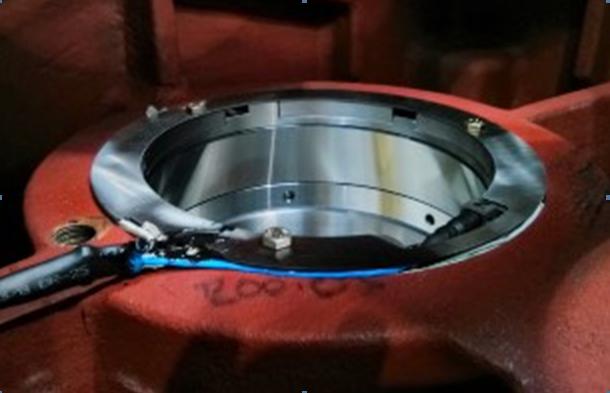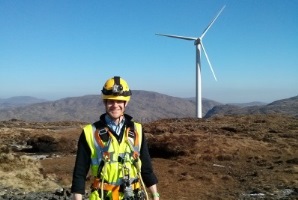Engineers from the University of Sheffield have developed a novel technique to predict when bearings inside wind turbines will fail.

Subjecting a bearing to a load reduces a dimension by a small amount due to elastic deformation. So the stress level in the bearing affects the speed of sound in the material which provides a wear indication.
A method, published in the journal Proceedings of the Royal Society and developed by Mechanical Engineering research student Wenqu Chen, uses ultrasonic waves to measure the load transmitted through a ball bearing in a wind turbine. The stress on wind turbine is recorded which lets engineers forecast its remaining service life.
When a bearing is subject to a load, its thickness is reduced by a small amount due to elastic deformation, which also affects the speed of sound by the stress level in the material. Both these effects change the travel time of an ultrasound wave through a bearing.
Researchers say the method is the only way to directly measure the transmitted load through rolling bearing components. The device uses a custom-built piezoelectric sensor mounted in the bearing to measure the time of flight and determine the load. The sensor is less expensive and significantly smaller than others currently available, making it suitable for smaller turbines. It can also provide a better prediction of the maintenance needed.
Professor Rob Dwyer-Joyce, co-author of the paper and Director of the Leonardo Centre for Tribology at the University of Sheffield says: “This technique can be used to prevent unexpected bearing failures, which are a common problem in wind turbines. By removing the risk of a loss of production and the need for unplanned maintenance, it can help to reduce the cost of wind energy and make it much more economically competitive.
The new technology has been validated in the lab and is currently being tested at the Barnesmore wind farm in Donegal, Ireland by the company Ricardo.
University of Sheffield
http://goo.gl/Gnwprs
Filed Under: Bearings, News, O&M






Thanks for the comment, Mr. Echavaria:
I had not heard of SWANtech until now. I would assume the real trick in the invention is signal processing, making the wave analysis say something accurate. Vibration signals from accelerometers do a good job of trend analysis. But, perhaps the Brits are on to something.
–Paul Dvorak
Isn’t this the same type of technology that SWANtech (now Curtiss/Wright) had proposed about 7 years ago? I was under the impression that stress wave analysis wasn’t as accurate as vibration measurements (which are not 100% accurate either), which is why SWANtech never made much of an impact in wind.